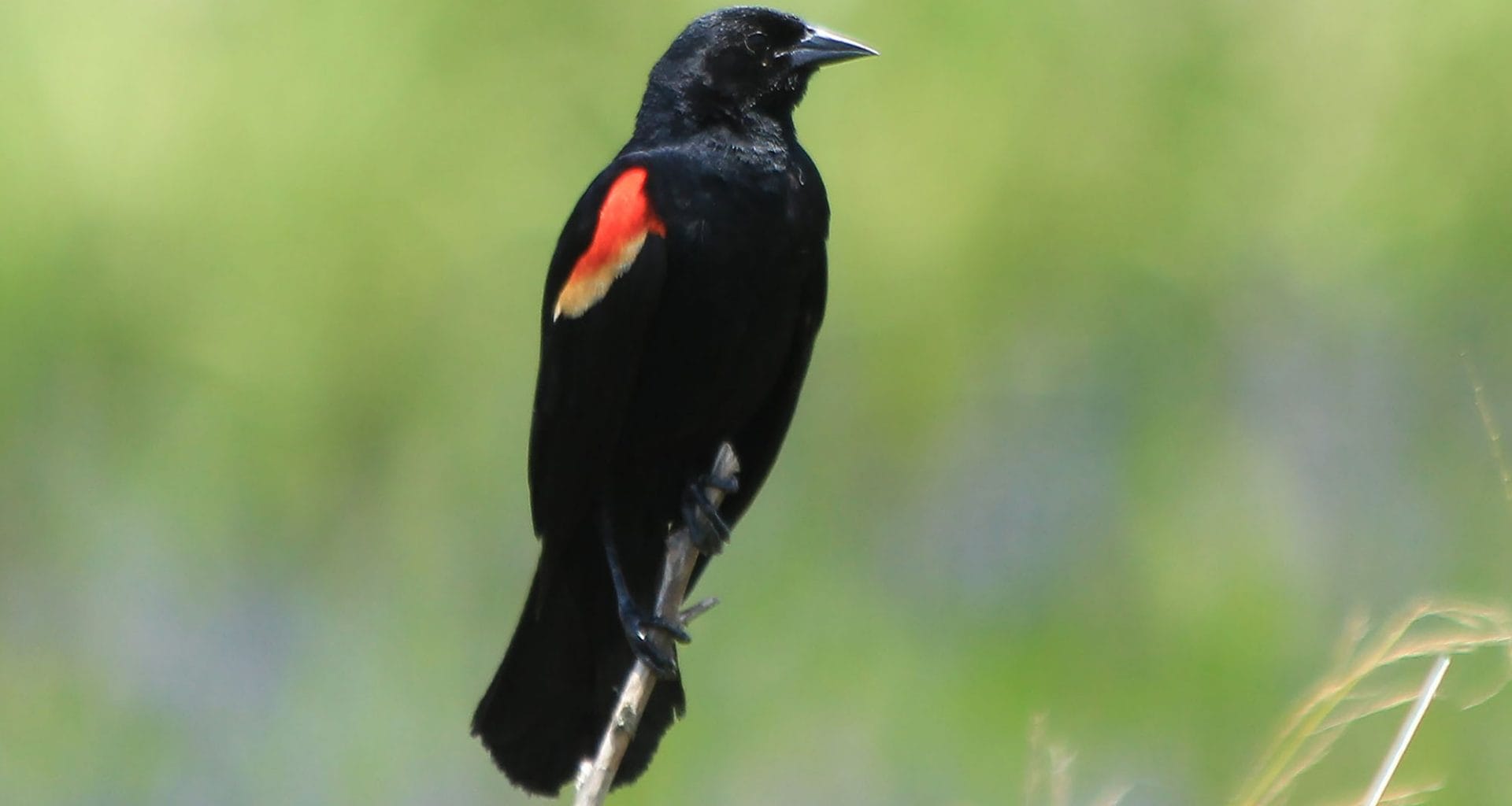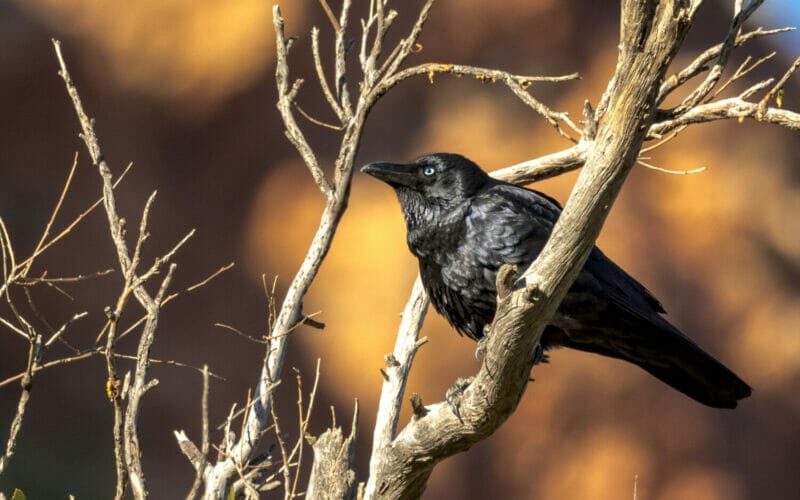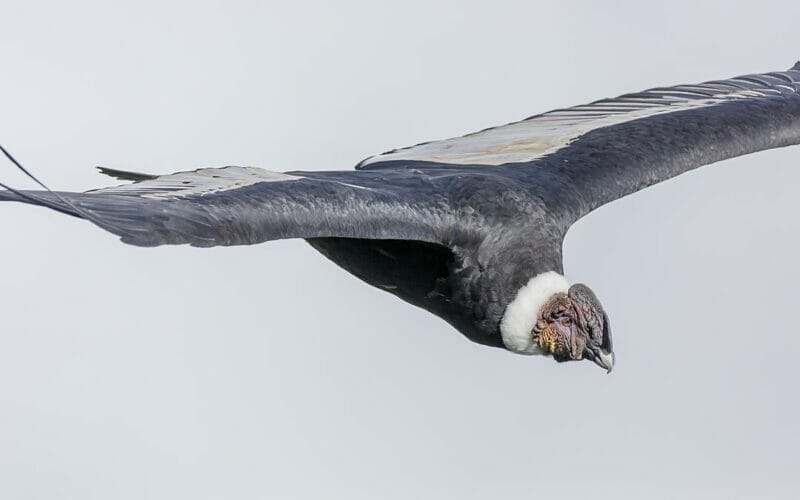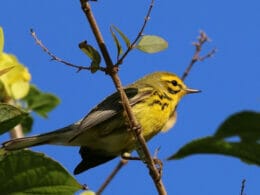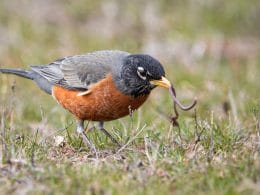In the moments before dawn, there is a magical cacophony of sounds to behold. Whether you are in a city and can hear a few early morning songs or in a more rural and natural setting, with an explosion of birdsong, there are always birds chirping in the morning. The chorus of the morning bird song is known as the dawn chorus. But what kind of birds chirp in the morning?
The most common kind of birds heard in the morning, in order of song in the morning chorus are blackbirds, thrushes, wrens, and chaffinches. But these species may vary depending on where you live. If you live in the southern hemisphere you will most likely hear additional birds before sunrise.
Let’s learn more about what kind of birds chirp in the morning!
Common Blackbird (Turdus merula)
The Common Blackbird may sound and look similar to other blackbirds- such as the New World Blackbirds and similar species- but it is quite different. Also known in Northern America as the Eurasian Blackbird, the Common Blackbird breeds in Europe, North Africa, and Asiatic Russia and is also present in countries such as Australia and New Zealand.

This Old World Blackbird is the most common type of birds that chirp in the morning.
American Robin (Turdus migratorius )
The American Robin is one of the most well-known birds throughout America. They’re the second most common type of bird in Illinois that chirp in the morning. While it is known to be one of the most active daytime birds during the night, it is also a celebrated morning singer. It is one of the few birds that belong to the true thrush family and is named after its European relative, the European Robin. It is a beautiful bird with a rust-colored breast.

Author Note: Although the American Robin has a powerful song, it has a tiny bodyweight of only 77 grams, with a life that lasts around two years (when living in the wild).
The American Robin is scattered throughout North America and enjoys spending the winter months in the more temperate southern areas of Canada, and can be found right down the Pacific coastline all the way to central Mexico. Michigan, Wisconsin, and Connecticut all share the American Robin as their state bird.
Carolina Wren (Thryothorus ludovicianus)
The Carolina Wren is the a common bird found in the south east of the continental United States. It is a tiny, shy bird that feeds on insect, featuring a short, erect tail. Its nervous disposition shows in its short neck and with an elongated bill that appears to shiver.
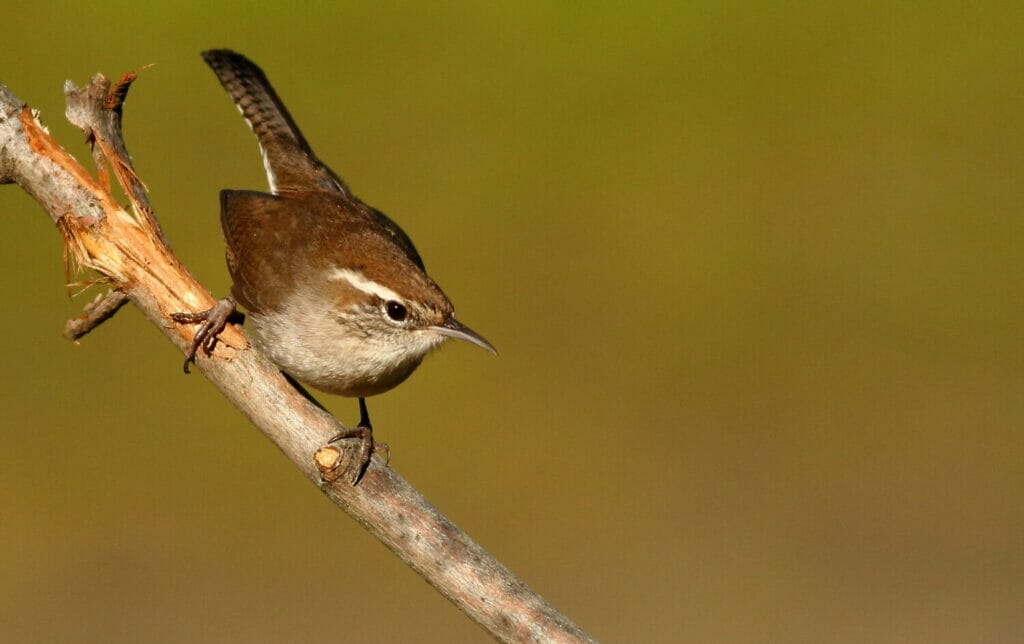
The coloring is a simple russet hue and lighter shades of brown on its belly and cream coloring on its supercilium. Unlike most birds, the Carolina wren male and female look quite similar. A mature wren has a tiny bodyweight of just 9 grams and a small length of up to twelve centimeters.
Chaffinch (Fringilla coelebs)
This small bird is known as the Common Chaffinch and can be found in abundance in its natural habitat. The chaffinch is a widespread bird and is part of the finch family. Males are easily recognizable with bright colors and a blue to a grey cap, and a russet red colored belly.
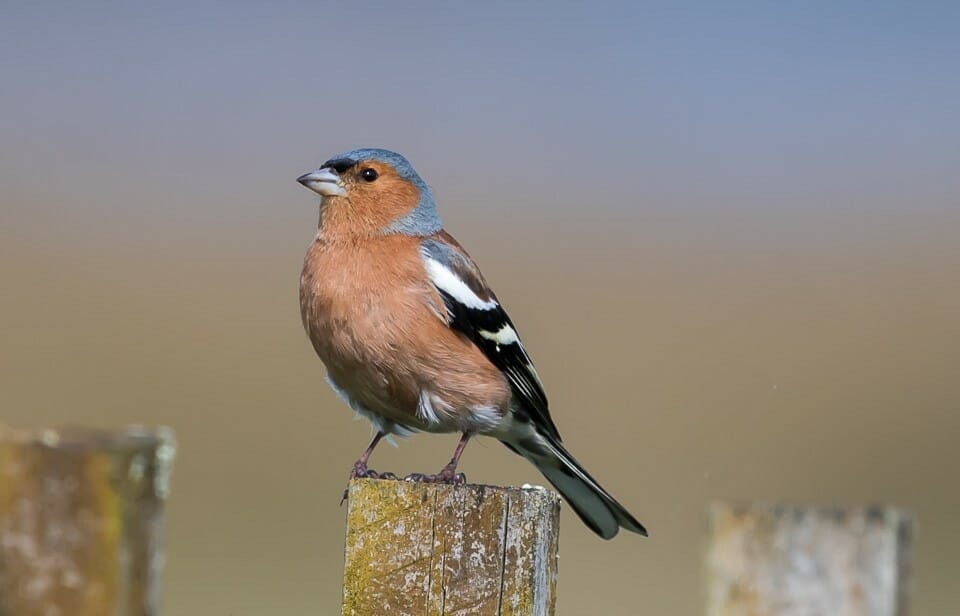
The female chaffinch is more camouflaged with duller coloring. Both the males and the females have striking white markings on the wings and on the sides of the tail. These birds join in the morning chorus, with the males contributing a strong voice.
Bird spotters can easily see males singing their strong songs perched out in the open. This is done to attract a mate. A mature chaffinch has a bodyweight of twenty-one grams.
Common Pheasant (Phasianus colchicus)
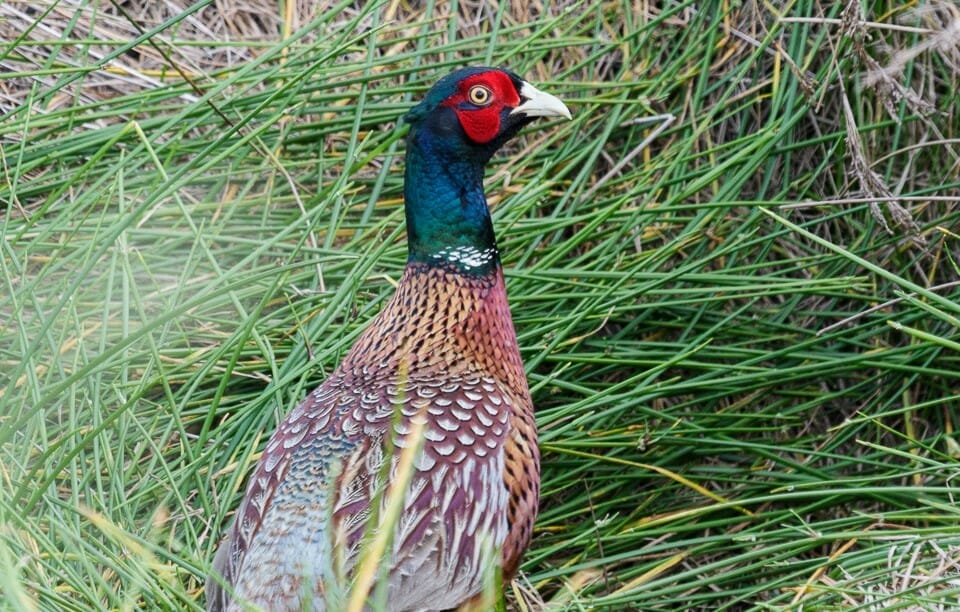
The common pheasant belongs to the Phasianidae pheasant family. The common pheasant is connected to the jungle fowl, as well as domesticated chickens, in a lineage that dates back 1000 years. Mature male pheasants reach a 1 kg in body mass, while the females typically reach around nine hundred grams.
Myrtle Warbler (Setophaga coronata)
Wood warbler, New World warblers, or just a warbler- whatever name you prefer to call this colorful bird, it doesn’t matter- the characteristic bright and colorful plumage will cause even the most seasoned bird watcher to smile in delight.
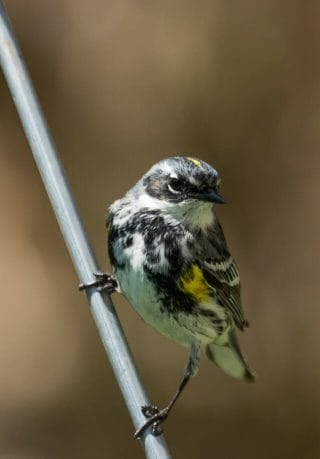
These birds belong to the Parulidae family and are not connected to the Australian warbler or the Old World Warbler. While most warblers are arboreal, some are mainly terrestrial birds. Terrestrial warblers include the two waterthrushes and the ovenbird. Fully grown, the insectivorous warbler reaches a small mass of no more than twelve grams.
Eurasian Blackcap (Sylvia atricapilla)
The blackcap is a widespread bird that can be commonly found during the morning chorus. The upper parts of the blackcap have an olive and grey hue, with the underparts a softer grey hue. There are five subspecies, but the differences among them are minor.
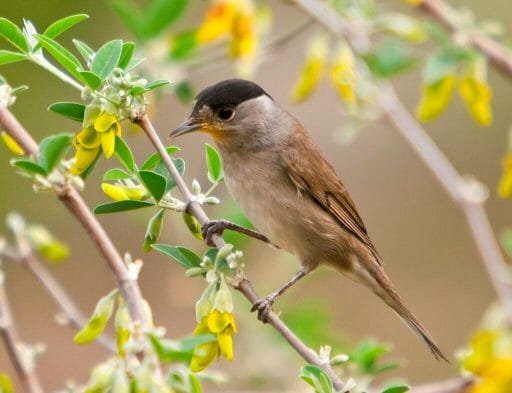
Both males and females have a colored cap on the head; the males don a black cap while the females don a reddish-brown cap. When it comes to the morning chorus, you can distinguish the blackcap by the male’s rich, musical warbling song. The warbling often finishes with a high pitched, dramatic crescendo.
However, some bird watchers that find this bird in a more tranquil and isolated environment can witness the blackcap simpler song. The mature blackcap can reach a bodyweight of approximately seventeen grams.
Common Chiffchaff (Phylloscopus collybita)
The chiffchaff, also known as the Common Chiffchaff, is a widespread species that can be seen in open woodlands. The chiffchaff is a leaf warbler and tends to spend winters in a range of areas from north Africa to the south and western Europe and right up to southern Asia.

The mature chiffchaff can reach a bodyweight of approximately eight grams.
Song Thrush (Turdus philomelos)
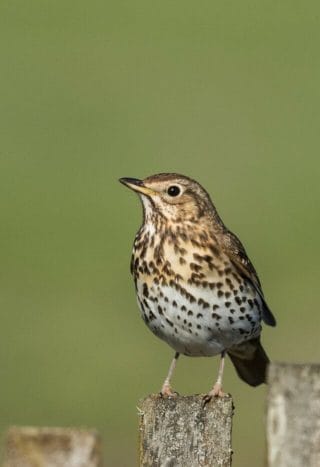
The Song Thrush has one of the most distinctive songs in the morning chorus. They have a distinct sound that includes several repeated musical phrases. The Song Thrush’s song has been likened to poetry and has inspired many budding bird watchers to rise for the early dawn chorus.
Which Bird is the Most Active in the Morning?
Songbirds are most active in the morning, like most species. However, their second spurt of activity is in the late afternoon, typically a few hours before dusk. Both the dawn and the dusk are excellent times for listening to the magical chorus brought to us by the birds.
Which Bird is the Loudest in the Morning?
The world’s loudest bird has been confirmed to be the male White Bellbird. Although the White Bellbird usually sings at around one hundred and sixteen decibels (dB), When one is wooing a potential mate, they can get as loud as one hundred and twenty-five decibels.
Which Birds Sing Together?
White-browed Sparrow-weavers are one of the few bird species that sing in duet. It is assumed that some cognitive coordination between individuals was required to synchronize the syllables in duet. However, the underlying neuronal mechanisms of such coordination are not known.
What is the Dawn Chorus?
The dawn chorus occurs when birds sing at the start of a new day. These are all the different kinds of birds that chirp in the morning. In temperate countries, this most noticeable in spring when the birds are either defending a breeding territory, trying to attract a mate, or calling in the flock. It is common for different species to do their dawn singing at other times in a given location.
In a study of the Ecuadorian forests, it was determined that birds perching higher in the trees and birds with more enormous eyes seem to pipe up first.
When is International Dawn Chorus Day?
It is taking place on the first Sunday of May. International Dawn Chorus Day is the worldwide celebration of nature’s greatest symphony. All across the world, people rise early to revel in the sweet sound of birdsong, from rattling wrens in Rotherham to crooning cowbirds in the Caribbean.
Every year there are early morning walks with experts to help you enjoy a start to the day filled with birdsong.
Do Other Animals Take Part in the Dawn Chorus?

There are a few animals that join in the dawn chorus. This is obviously connected to the landscape and environment. In some areas, several primate species enjoy losing their voice to the dawn chorus.
Author Note: These are usually territorial calls. Other species that join in the dawn chorus include the lesula, the black howler, the gibbon, and the mantled guereza. The black howler has a particularly distinctive call, with vocals that can travel up to 5 km.
How are Birds Connected to Natural Light?
Most birds, except for nocturnal species, require natural sunlight for essential vitamin D production. Aside from vitamin D production, birds need sunlight for feather, organ, and skin health, as well as for balanced hormones.
Birds typically wake up in the light as their instincts tell them to stay awake and be on the lookout for possible predators. Birds in more developed areas will likely have disrupted circadian rhythms. This is why, in areas closer to cities, the dawn chorus may seem to begin earlier, as the artificial light could disturb a bird’s sleep cycle.
Artificial light impacts migratory patterns for many bird species. The disrupted circadian rhythm is just the start, and excessive artificial light at night causes birds in migration to get disorientated. This is why we sometimes see birds ‘lost’ in countries and areas where they are not usually found.
The dawn chorus is one of the earth’s ancient songs, and it is a privilege to witness. Whether you hear the distinct calls of the song sparrow on the edge of the Mayacamas Mountains or the cacophony of sounds that erupt from the misty morning just before dawn, there is one undeniable fact; the dawn chorus is a sound to behold.
We hope you found this article on what kind of birds chirp in the morning useful! Let us know which birds that chirp in the morning are your favorite in the comments below.
Fly high friends!
FAQ
Birds chirp in the morning is a way of marking territory, as they are extremely active in the early hours of the day foraging for food and taking care of their young. Bird chirping in the morning is commonly referred to as the Dawn Chorus. Chirping is also a way for birds to synchronize their activity and find their flock, specially during migration. Additionally, some species of birds have a natural internal clock that causes them to be more active and vocal during the early morning hours.
Depending on the location, the European Robin is a common early morning singer, as is the American Robin and the Northern Cardinal. There are a variety of other early morning birds such as the American Goldfinch and Wood Thrush.
The dawn chorus is the coordinated singing of many different species of birds that occurs at dawn, it’s most commonly heard during the breeding season. The singing serves multiple purposes such as marking territory, attracting a mate and synchronizing activity. The dawn chorus is most intense during spring and summer and can be heard in many natural environments worldwide, it’s a popular time for bird watching and nature enthusiasts.




